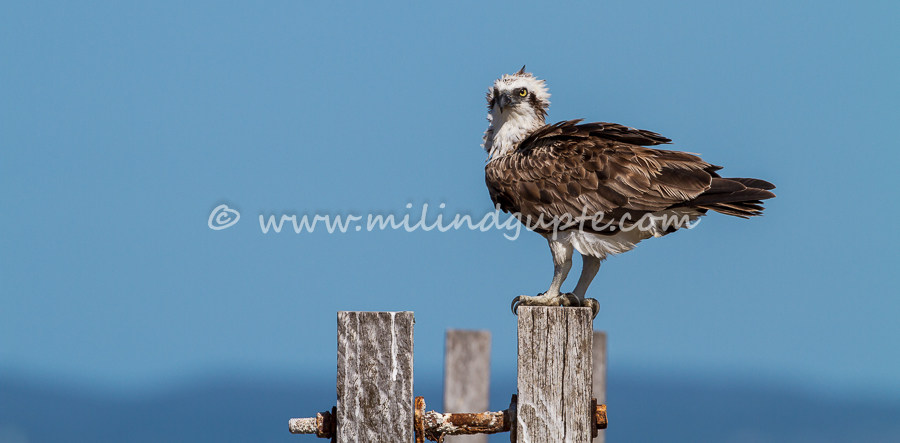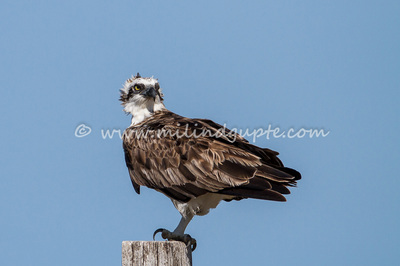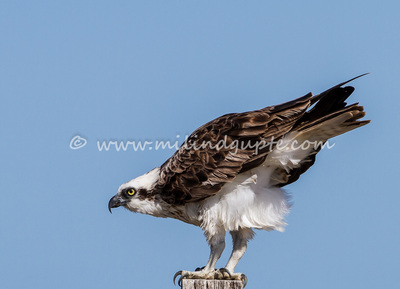|
I have been shooting with the Canon EF 200-400 f4 IS with my 7D for a little while now. The results are getting better. One weekend I hastily checked the tide timings for a beach about an hours drive away and left with the Canon EF 200-400 f4 IS and the monopod. This beach is mostly rocky and deserted. This time of the year you get a few wader species at low tide feeding in the shallow rock pools, but you have to get the tide time right. When I reached the beach I was a bit disheartened to see that the tide was at its lowest and the water and the birds were far out. The shallow rock pools were deserted. I could see a few gulls and Godwits in the distance but no Oystercatchers which I was hoping to see and photograph. I had got the light right but in my haste the tide time wrong. Since I was already there, I decided to wait and see if I could find anything worth photographing. While scanning the shoreline with my binoculars, I noticed that the Godwits were in the mud flats away from the rocky portion of the beach. I was reluctant to go with the big Canon EF 200-400 f4 IS as the soft mud is very slippery, standing in one place one slowly starts sinking in and to make matters worse the monopod with the heavy Canon EF 200-400 f4 IS, on top of it, sinks even deeper. I then noticed a big bird resembling a bird of prey close flying close to the ground. It turned out to be an Osprey [Pandion haliaetus] . These birds can be spotted flying over water and are always found near water bodies as their diet is predominantly fish. I wondered what it was doing flying so low over rocky ground. It flew across, swung up and perched on wooden posts some distance away. Watching it through my binoculars, it did not seem to be in a hurry and made itself comfortable. Pulling one leg up and tucking it away, it kept surveying its surroundings standing on one leg. I decided to try my luck with getting few shots of the Osprey.There was no cover between the bird and I. This was the first time I was carrying the Canon EF 200-400 f4 IS over slippery and uneven ground. I slowly made my way at an angle to its perch keeping one eye on it and the other on the ground under my feet. One false step and the Canon EF 200-400 f4 IS would be on the hard rocks along with me. As I got closer, I put the monopod on the ground and hid my face behind the camo covered lens. My dull coloured attire also helped. Every time the Osprey looked the other way I moved a few steps ahead and stopped. The progress was very slow but eventually I was close enough so that the bird was filling half the frame with the TC [tele converter] engaged. I started shooting and only then did I notice the wind. Trying to hold the AF point where I wanted as I was being pushed by strong gusts of wind was a challenge. The big lens hood provided more wind resistance, moving the whole setup. I tried edging closer while keeping myself hidden behind the lens but didn’t get too far as I did not want to disturb the bird. So far it had been cooperating nicely. I kept a close watch on the Osprey’s body language. It was very relaxed and once in a while it would bring down its other leg and then up again. It was at an angle to me [not exactly parallel to the camera] and every time it looked my way, I took a shot. It started preening itself with the wind ruffling its feathers. All the time while preening it had it eyes always shut [as you can see from the photo below] and looked fresh and alert at the end of it. With it’s rest over it flew away with it’s back to me.
4 Comments
|
Archives
October 2017
Categories
All
|






 RSS Feed
RSS Feed
